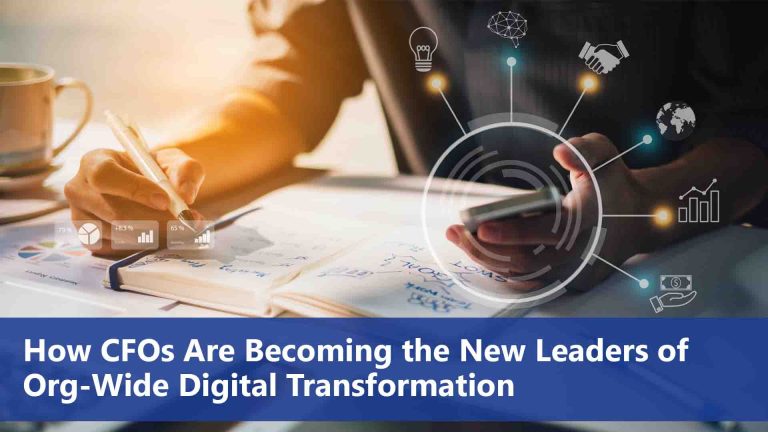Navigating the complex world of data, analytics, and AI can seem daunting when you’re just starting out. With the multitude of technologies and tools to grasp, it’s challenging to know where to begin your data science journey. So, what are the initial steps in data science that you should take?
Fortunately, creating your first data analytics project plan is more manageable than it may appear. The key is to start with a user-friendly tool that caters to individuals of all backgrounds and expertise levels. However, before you dive into tools, it’s essential to comprehend the data science process itself. To become proficient in harnessing the power of data and AI, you must first grasp the fundamental steps and phases of a data analytics project. This journey takes you from preparing raw data to constructing a machine learning model and, ultimately, to the operationalization stage.
Here, we present our interpretation of a data project’s definition through the essential steps outlined in a data analytics project plan in this exciting era of analytics and AI, including Generative AI. These 7 data science steps are designed to help you extract business value from each unique project while minimizing the risk of errors.
Table of Contents
Step 1: Grasp the Business Context for Your Analytics Project
Understanding the business or context in which your data project operates is crucial for its success and constitutes the primary phase of any robust data analytics project. To rally the diverse stakeholders required to take your project from conception to implementation, it must directly address a well-defined organizational requirement. Before delving into the data aspect, engage with individuals in your organization whose processes or business you intend to enhance through data (beyond mere spreadsheet usage). Subsequently, establish a timeline and concrete key performance indicators. While planning and processes may seem unexciting, they serve as an indispensable initial stride to launch your data initiative.
Even if you’re working on a personal project or experimenting with a dataset or API, this step holds significance. It’s not superfluous. Merely acquiring an intriguing open dataset won’t suffice. To have motivation, direction, and purpose, you must pinpoint a specific objective for your data endeavor: a distinct question to address, a product to develop, and so forth.
Step 2: Acquire Your Data
Once you’ve solidified your objective, the next phase of your data analytics project involves obtaining the necessary data. The strength of a data project often lies in the amalgamation of data from various sources, so cast a wide net in your search.
Here are several methods to acquire usable data:
- Database Connection: Collaborate with your data and IT teams to access available data or explore your organization’s private databases to gain insights into the information collected.
- Utilize APIs: Tap into the APIs of the tools your company utilizes and the data they’ve accumulated. Ensure these are configured correctly to access data such as email open and click statistics, sales team data from Pipedrive or Salesforce, support ticket records, and more.
- Explore Open Data: The internet offers a wealth of datasets to complement your existing data with additional insights. For instance, census data can enrich your understanding of the average revenue in the district where your users reside, and OpenStreetMap can provide information on the number of coffee shops on a particular street. Many countries maintain open data platforms with valuable resources.
Step 3: Explore and Refine Your Data
The following step in your data science journey is the often-dreaded data preparation process, which typically consumes around 80% of the time allocated to a data project.
Once you’ve acquired your data, the third phase of your data analytics project comes into play. Begin by delving into your dataset to understand its contents and how you can establish connections to align with your original objectives. Document your initial analyses and seek input from business experts, the IT team, or other relevant groups to decipher the significance of your variables.
The subsequent step, which can be the most formidable, involves data cleaning. You might notice discrepancies like varying spellings or missing data, even in seemingly straightforward categories like “country.” It’s essential to meticulously review each column to ensure data uniformity and cleanliness.
Caution! This phase is likely the longest and most taxing part of your data analytics project. It might be challenging for a while, but maintaining focus on your ultimate goal will help you push through it.
Lastly, a pivotal aspect of data preparation not to overlook is ensuring compliance with data privacy regulations. Personal data privacy and protection are gaining significance for users, organizations, and legislators alike. It should be a priority from the outset of your data journey. To execute privacy-compliant projects, consolidate all your data efforts, sources, and datasets into a single location or tool to facilitate governance. Subsequently, clearly label datasets and projects containing personal or sensitive data that necessitate distinct treatment.
Step 4: Enhance Your Dataset
Now that you have a clean dataset, it’s time to optimize it to extract maximum value. The data enrichment phase of your project involves consolidating various sources and aggregating logs to refine your data into its essential components. One method is to create time-based features, such as:
- Extracting date components (month, hour, day of the week, week of the year, etc.).
- Calculating time differences between date columns.
- Identifying national holidays.
Another approach to data enrichment involves joining datasets, essentially incorporating columns from one dataset or tab into a reference dataset. This is a critical aspect of any analysis, but it can become overwhelming when dealing with numerous sources.
While collecting, preparing, and manipulating your data, it’s crucial to exercise caution to prevent unintentional biases or undesirable patterns from infiltrating it. Data used to build machine learning models and AI algorithms often mirrors the external world, potentially harboring biases against specific groups or individuals. Training your model on biased data may cause it to interpret these biases as deliberate decisions rather than something to rectify.
Hence, a vital aspect of the data manipulation process involves ensuring that the datasets utilized do not perpetuate or reinforce biases that could lead to unfair, unjust, or biased outcomes. Accounting for the machine learning model’s decision-making process and the ability to interpret it are now as critical for a data scientist as, if not more than, the ability to construct models in the first place.
Step 5: Craft Informative Visualizations for a better Data Analytics Project
Now that you’ve curated a refined dataset (or perhaps multiple), it’s an opportune moment to embark on exploration through data visualization. In projects involving substantial data volumes, visualization stands as the primary means to delve into your data and convey your discoveries, constituting the subsequent phase of your data analytics project.
The challenge here lies in your ability to delve into your visual representations at any time and address any inquiries that might arise concerning a particular insight. This is where the meticulous data preparation you’ve undertaken proves invaluable: You’re the one who’s navigated the intricacies of the data, so you possess an intimate understanding of it! If this represents the culmination of your project, it’s essential to leverage APIs and plugins to seamlessly deliver these insights to where your end users require them.
Visualizations also offer an avenue for enhancing your dataset and developing more captivating features. For instance, plotting your data points on a map might reveal that specific geographic zones yield more meaningful insights than individual countries or cities.
Step 6: Embrace Predictive Analytics
In the sixth phase of your data project, you delve into the exciting realm of predictive analytics, where the real excitement begins. Machine learning algorithms open doors to deeper insights and the ability to forecast future trends.
By employing clustering algorithms (also known as unsupervised learning), you can construct models that unearth trends within the data that may not have been discernible through graphs and statistical analysis alone. These algorithms group similar events into clusters, providing more explicit insights into which features play a pivotal role in shaping these outcomes.
For more advanced data scientists, the journey extends further to predicting future trends with supervised learning algorithms. By scrutinizing historical data, they identify features that have influenced past trends and leverage them to formulate predictions. Beyond knowledge acquisition, this final step has the potential to spawn entirely new products and processes.
Even if you haven’t reached this stage in your personal data journey or within your organization, it’s crucial to comprehend this process to ensure that all involved parties can grasp the outcomes.
Lastly, to extract genuine value from your project, your predictive model should not remain dormant; it must be operationalized. Operationalization entails deploying a machine learning model for organizational use. This step is indispensable for both your organization and you to fully realize the benefits of your data science endeavors.
Step 7: Iterate and Evolve
In any business endeavor, the primary objective is to demonstrate its effectiveness as swiftly as possible to justify its existence – and the same principle applies to data projects. By optimizing your efficiency in data cleaning and enrichment, you can expedite progress toward project completion and attain initial results. This constitutes the final phase of your data analytics project, one that holds paramount importance in the entire data life cycle.
One of the most significant misconceptions in machine learning is assuming that once a model is constructed and deployed, it will perpetually function at its peak. Contrarily, models tend to degrade in quality over time unless they receive continual refinement and fresh data inputs.
Ironically, to successfully conclude your inaugural data project, you must acknowledge that your model will never truly be “complete.” To ensure its ongoing utility and accuracy, constant reassessment, retraining, and the development of new features are essential. If there’s one key takeaway from these fundamental steps in analytics and data science, it’s that a data scientist’s role is an ongoing journey, filled with continuous improvement and perpetual fascination in the realm of data.













